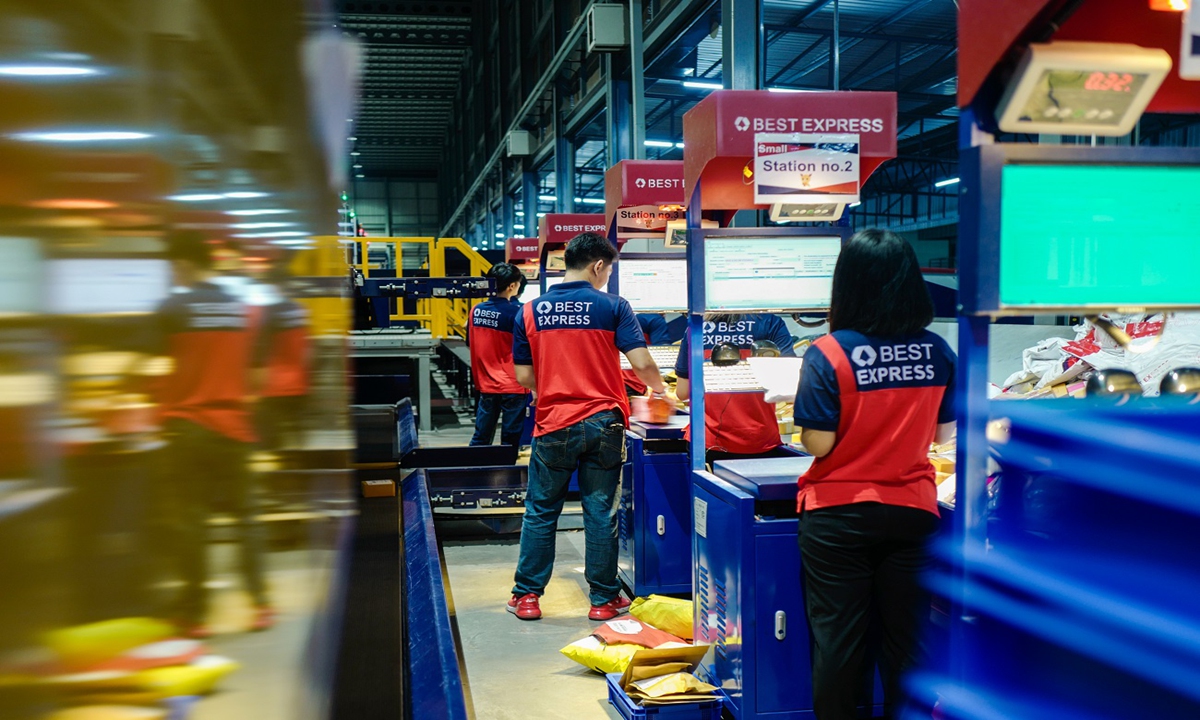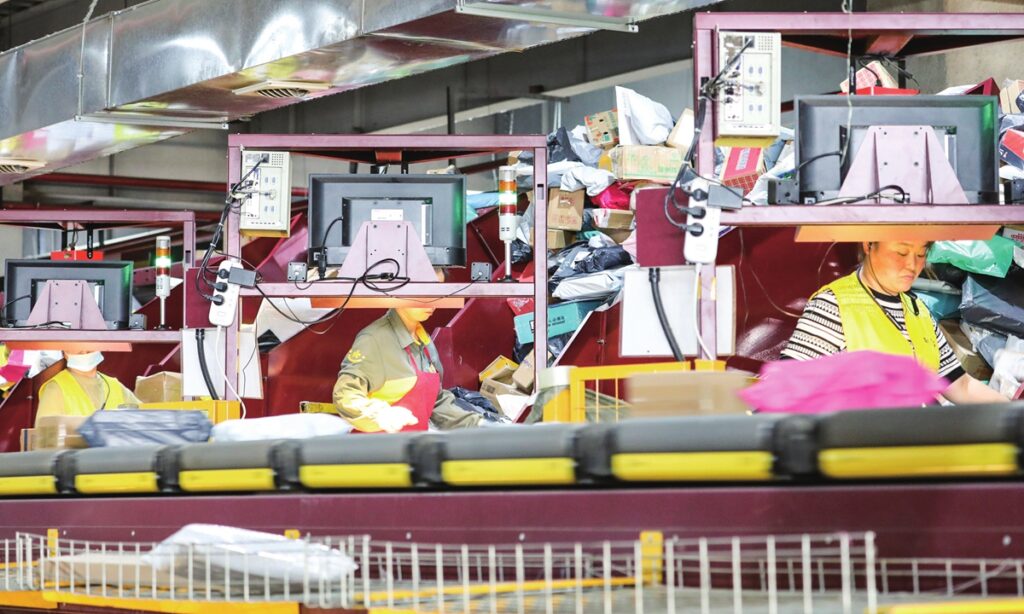RCEP buoys cross-border trade, e-commerce boom: analyst
China’s mid-year shopping gala, known as “618”, has become more than a domestic e-commerce extravaganza. It’s garnering growing attention in Southeast Asian countries, becoming a new growth driver for global cross-border trade.
Chinese e-commerce players and logistics firms are seizing the opportunity to expand their footprint in Southeast Asian markets, riding on the policy boon brought by the Regional Comprehensive Economic Partnership (RCEP), the largest free trade agreement in the world.
Chinese businesses are betting on a robust consumption spree and brisk trade with Southeast Asian neighbors, observers told the Global Times.
BEST Inc, an integrated supply chain and logistics solutions provider based in Hangzhou, East China’s Zhejiang Province, said its business in Southeast Asia is now surging, including big-ticket items as well as small commodities.
“Many Malaysian distributors like to purchase goods on Chinese e-commerce platforms, and individual consumers are also stocking up during promotional campaigns,” Sun Yuefei, general manager of BEST’s Malaysian subsidiary, told the Global Times.
“Our cross-border logistics service opens up new consumption possibilities for the Malaysian market. For example, furniture for home renovations can now be bought across borders,” Sun said.
According to BEST’s customs declaration data, the major categories of bulky products shipped from China to Malaysia include furniture, appliances, decoration materials and pet products.

BEST Inc’s express sorting center in Bangkok, Thailand Photo: Courtesy of BEST
In Malaysia, the volume of cross-border large-scale shipments processed by BEST in May jumped by 238 percent compared with January. The company achieved one-stop delivery of large items between the two countries at the end of last year.
TikTok, the popular short-video platform owned by Chinese tech giant ByteDance, said it would pour billions of dollars into Southeast Asia in the coming years, betting on the rapidly growing markets there.
“We’re going to invest billions of dollars in Indonesia and other Southeast Asia markets over the next few years,” CEO Shou Zi Chew told a forum in the Indonesian capital Jakarta on Thursday, according to an AFP report.
Since TikTok Shop, a marketplace built into the TikTok app, was launched in Indonesia in February 2021 as its first step in developing e-commerce in Southeast Asia, it has quickly put Thailand, Vietnam, Malaysia, the Philippines, Singapore and other places on the chessboard within two years, trying to seize more market share.
Last year, it launched an “8.8 Sale” campaign in Singapore to mark the country’s National Day. The week-long promotional event from August 4-10 saw daily gross merchandise volume (GMV) triple compared with average daily levels a week earlier, the company said.
“Southeast Asia is undoubtedly a new growth pole for global cross-border business, and Chinese cross-border e-commerce firms are eyeing the region,” an industry insider who asked to be anonymous, told the Global Times on Sunday.
“Affected by inflation, consumption in Europe and the US is weakening. In comparison, Southeast Asia is closer to China, the logistics costs are low, and the cultural environment is comparable. E-commerce there is picking up momentum,” the insider said.
It is expected that e-commerce in Southeast Asia could sustain robust annual growth of 15-25 percent during the next five years. Between now and 2026, the Southeast Asian market is projected to triple at a compound growth rate of 22 percent and will reach around $230 billion in GMV, a McKinsey report said earlier.
E-commerce sales in Southeast Asia are projected to grow by 18.6 percent in 2023, far exceeding the average growth rate of 8.9 percent for global e-commerce, according to a report released by research agency eMarketer.
With RCEP taking effect for all 15 members on June 2, the massive free trade zone is set to enter a new phase.
“As the RCEP brings new growth momentum to the development of cross-border e-commerce, firms that provide cross-border services between China and other RCEP member countries are welcoming policy dividends,” Bai Ming, a research fellow at the Chinese Academy of International Trade and Economic Cooperation in Beijing, told the Global Times on Sunday.
“It could inject impetus for the transformation, upgrade and high-quality development of cross-border e-commerce,” Bai said.
The 15 countries’ commitment to open their goods, services and investment markets, along with the high-level rules in various sectors, will greatly promote the free flow of production elements in the region, including raw materials, products, technology, talent, capital and information and data.
Signed on November 15, 2020, the RCEP is the world’s largest free trade agreement covering about 30 percent of the world’s population and 30 percent of global trade. The agreement entered into force on January 1, 2022 for China and nine other countries, with the Philippines being the last country to ratify the free trade agreement.
(Global Times)




